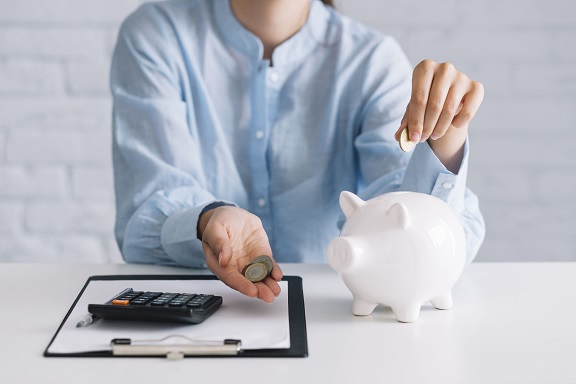The expectation is a husband (H) and a wife (W) in a marriage would both control a family discretionary trust (FDT) established for H and W and their family. This will usually be reflected in both H and W being joint appointors or principals under the trust deed of the FDT.
But suppose the marriage breaks down. Which of H and W is to continue to control the FDT?
Do both spouses control a family discretionary trust to which they add capital?
The trustee of a FDT has all of the discretionary power over income or capital of a FDT. In some cases W may find that H, and not W, is the sole appointor or principal who determines who the trustee of the FDT will be.
But say W alone, or both H and W, have made significant contribution to the capital of the FDT. W may be rightly aggrieved that W has been excluded from control of the FDT. It may be that the professional who supplied the trust deed of the FDT cannot prove he or she was directed by H, or by H and W, that only H would have autonomy over who is trustee. The professional can be held responsible by W for W’s loss of control of her money in the FDT.
Where the professional was a practising lawyer, who prepared and supplied the trust deed of the FDT, the lawyer can rely on his or her professional indemnity insurance (PII) to meet W’s loss in this unhappy situation. But where the professional was an accountant, who obtained the trust deed online for H and W using the kind of service described in my blog – A dentist might be better than the cheapest guy with a drill https://wp.me/p6T4vg-pn then expect the accountant to be liable to W without recourse to PII cover.
Following divorce
Desirable control of a FDT in an ongoing marriage and desirable control following the divorce of H and W are different. Usually a divorcing couple will separate and will seek to separate their property and business interests including those held for H, W and their family through a FDT.
Let us say W is to have the property and perhaps, business, interests of a FDT following the divorce of H and W.
That can be achieved by:
- the trustee of the FDT transferring property, etc. of the FDT that H is to take to H, with the FDT to keep its remaining property for W and her family; and
- by W taking control of the FDT and control of the trustee of the FDT in particular.
For capital gains tax (CGT) reasons there is imperative that the parties obtain or arrange:
- a court order,
- a maintenance agreement;
- a financial agreement; or
- an arbitral award
to which section 126-15 of the Income Tax Assessment Act (ITAA) 1997 applies, so the trustee of the FDT can transfer property to a spouse with rollover relief under section 126-5.
The conditions for this CGT marriage breakdown relief can only be met where a formal court order or a court approved agreement or award specifies that W is to control the FDT. If need be the parties may need to return to a family court to so satisfy Division 126 conditions for CGT rollover.
Family trust election
There is further reason to seek and obtain a formal court order or a court filed agreement or award that W is to control the FDT. A FDT can obtain “concessions” for any of the five main reasons for a trust by becoming a family trust (Sch2F FT) under Schedule 2F of the ITAA 1936 at:
Family trusts concessions | Australian Taxation Office https://tinyurl.com/2b3u66aq
which, briefly stated, are to:
- allow a trust to recoup trust tax losses against assessable income where the trust would otherwise fail tests in Schedule 2F that preclude that recoupment;
- allow a non-fixed trust that is a shareholder in a company to be counted as a single notional person in determining whether a company can recoup company tax losses primarily under Division 165 of the ITAA 1997;
- allow a non-fixed trust to be a qualified person that satisfies holding period rules that will allow the trust to utilise and pass on franking credits on franked distributions received by the trust;
- exempt a closely held trust from having to comply with trustee beneficiary rules which expand tax return reporting obligations where a beneficiary, or a series of beneficiaries, of a trust is another trust. Otherwise, a TB statement revealing the untaxed share of ultimate beneficiaries subject to trustee beneficiary non-disclosure tax must be filed so that an offence of strict liability does not arise; and
- allow a discretionary trust to have a set ultimate economic ownership that can allow the trust to effect a CGT small business restructure rollover under Sub-div 328-G of the ITAA 1997.
Family trust distribution tax – a Sch 2F FT problem following divorce
To get and maintain the “concessions” a trustee of a Sch 2F FT, following the making of a family trust election, is incentivised not to distribute property to others outside of (outsiders to) its family group: broadly:
- certain close relations of the (one) individual that can be specified, the specified individual, in the family trust election made by a Sch 2F FT;
- companies and trusts (if any) that pass a family control test, in relation to the specified individual, and which have an interposed entity election to be included in the family group of the specified individual in force;
- other Sch 2F FTs that have the specified individual in common in their own family trust election; and
- various excepted beneficiaries unrelated to the specified individual like charities;
are within a family group of a specified individual in a family trust election under Schedule 2F: see Family group under:
Family trusts concessions | Australian Taxation Office https://tinyurl.com/2b3u66aq
Where a Sch 2F FT confers a present entitlement on, or distributes income or capital of the Sch 2F FT to, a person who is not in the family group set in the family trust election the trustee of the Sch 2F FT is liable for family trust distribution tax (FTDT): section 271-15 of Schedule 2F. FTDT is imposed at the highest 47% tax rate. A FDT that is not a Sch 2F FT is, by comparison, never liable to FTDT.
Where H, or say a parent of H, is the specified individual in the family trust election then distributions to W, following divorce, won’t be outside of the family group of and referable to H as the family group can include a former spouse of the specified individual, or a former spouse of certain prescribed members of the family of the specified individual: sub-section 272-90(2A). However:
- W’s new spouse and family (if any); and
- another company or trust owned or controlled by W – unless an election is made with H as the specified individual;
won’t be in the family group of H and so distributions to any of them will attract FTDT unless the family trust election of the FDT making the distribution is varied to alter its specified individual.
Many FDTs will be a Sch 2F FT by the time of a marriage breakdown and divorce. What can H and W then do to ensure the FDT will not have especial exposure to FTDT because of the alteration to their family relationships?
H & W can consider either revocation or variation of the family trust election of the FDT should their FDT come to the divorce as a Sch 2F FT with a family trust election designating a specified individual inapt for the settlement of their divorce.
Revoking a family trust election
In the case of a discretionary trust, which is a non-fixed trust, a family trust election is generally irrevocable: sub-section 272-80(6) of Schedule 2F which is subject to a limited exception in sub-sections 272-80(6A) and (6B) where the family trust election has been “unused” to make use of “concessions”: under sub-section 272-80(6A) a Sch 2F FT. That is where the trust and its beneficiaries have never relied on a family trust election sought to be revoked:
• to reduce assessable income with a tax loss;
• to claim a deduction for bad debts that otherwise would have been unavailable; or
• to allow beneficiaries of the trust to receive franking credits;
the family trust election can be revoked but not where more than four years have elapsed since the family trust election went into force: sub-section 272-80(6B).
Based on the examples in the Explanatory Memorandum that introduced the Tax Laws Amendment (2007 Measures No. 4) Act 2007, trustees of both fixed trusts and non-fixed trusts can revoke a family trust election using this time limited “never used” exception.
In practice opportunity to revoke is likely to be rare as it is unusual for a trustee of a FDT to make a family trust election that is never used and to have the marriage of the principals breakdown within four years of the family trust election being made.
Variation of a family trust election
Variation of the family trust election is the more likely and applicable solution.
So long as H and W meet the same imperative applicable to a CGT rollover on marriage breakdown viz. the parties obtain or arrange:
- a court order,
- a maintenance agreement;
- a financial agreement; or
- an arbitral award
to which section 126-15 of the Income Tax Assessment Act (ITAA) 1997 applies then Schedule 2F offers a limited opportunity to vary a family trust election:
- specifying H as the specified individual; and
- to be controlled by W under the order, agreement or award;
so that W becomes the specified individual under the family trust election in force for the FDT.
This variation is allowed under sub-section 272-80(5C) of Schedule 2F. A valid variation so W becomes the specified individual will allow the trustee of the FDT, as a Sch 2F FT, to distribute income and capital to members of W’s family who are not members, viz. outside of H’s family group where they are within the family group of W. Interposed entity elections to include the trust or company in the family group of the specified individual can then be done in future for companies and trusts in the control of W and W’s family.
Belatedly obtaining a family law order, agreement or award
Where an order, agreement or award on the divorce of H and W did not deal with control of the trust by either spouse, it may be possible to go back to the court that made the order for a further order, agreement or award or modification so either or both:
- a CGT rollover is available on the transfer of CGT assets by the FDT necessitated by the marriage breakdown; or
- a variation of the family trust election of the FDT under sub-section 272-80(5C) where the FDT is a Sch 2F FT and a change is needed in the specified individual designated in the family trust election to reduce the exposure of the Sch 2F FT to FTDT on distributions of income and capital the trust may make in future;
can be done.










